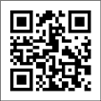資料紹介
タグ
 All rights reserved.
All rights reserved.
資料の原本内容
April 1993 · American Psychologist
Vol. 48, No. 4, 384-392
1992 Award Addresses
Facial Expression and Emotion
Paul Ekman
Cross-cultural research on facial expression and the de velopments of methods to measure facial expression are briefly summarized. What has been learned about emo tion from this work on the face is then elucidated. Four questions about facial expression and emotion are dis cussed. What information does an expression typically convey? Can there be emotion without facial expression? Can there be a facial expression of emotion without emo tion? How do individuals differ in their facial expressions of emotion?
In 1965 when 1 began to study facial expression,1 few thought there was much to be learned. Goldstein (1981) pointed out that a number of famous psychologistsF. and G. Allport, Brunswik, Hull, Lindzey, Maslow, Os good, Titchnerdid only one facial study, which was not what earned them their reputations. Harold Schlosberg was an exception, but he was more interested in how to represent the information derived by those who observed the face than in expression itself.2 The face was considered a meager source of mostly inaccurate, culture-specific, stereotypical information (Bruner & Tagiuri, 1954). That this contradicted what every layman knew made it all the more attractive. Psychology had exposed the falseness of a folk belief, a counterintuitive finding.
The late Silvan Tomkins (1963) was virtually the only contrary voice. He convinced me to extend my studies of nonverbal behavior from body movement to the face, helping me design my initial cross-cultural studies. Tomkins also advised Carroll Izard in the design of similar studies at the same time. He did not tell either of us about the other, which helped the science because it provided independent replications but was an unwelcome surprise when we learned that we had not been alone in our dis coveries.
We each found high agreement across members of diverse Western and Eastern literate cultures in selecting emotion terms that fit facial expressions. Izard (1971) added evidence that cross-cultural agreement was pre served for most emotions when subjects were allowed to choose their Own words to describe the feelings shown in the expressions. We (Ekman & Friesen, 1971) extended the findings to a preliterate culture in New Guinea, whose members could not have learned the meaning of expres sions from exposure to media depictions of emotion. We also found agreement about which expressions fit with different social situations, such as the death of a child, a fight, and seeing friends.
Friesen and I (Ekman, 1972; Friesen, 1972) also ex tended the findings of how people interpret expressions to the study of how and when people show expressions. We found evidence of universality in spontaneous expressions and in expressions that were deliberately posed. We postulated display rulesculture-specific pre scriptions about who can show which emotions, to whom, and whento explain how cultural differences may con ceal universals in expression, and in an experiment we showed how that could occur.
In the last five years, there have been a few challenges to the evidence of universals, particularly from anthro pologists (see review by Lutz & White, 1986). There is, however, no quantitative data to support the claim that expressions are culture specific. The accounts are more anecdotal, without control for the possibility of observer bias and without evidence of interobserver reliability. There have been recent challenges also from psychologists (J. A. Russell, personal communication, June 1992) who study how words are used to judge photographs of facial expression. However, no one to date has obtained strong evidence of cross-cultural disagreement about the inter pretation of fear, anger, disgust, sadness, or enjoyment expressions. There is no instance in which 70% or more of the people in one cultural group judged a picture as showing one of these emotions and a similar p...








